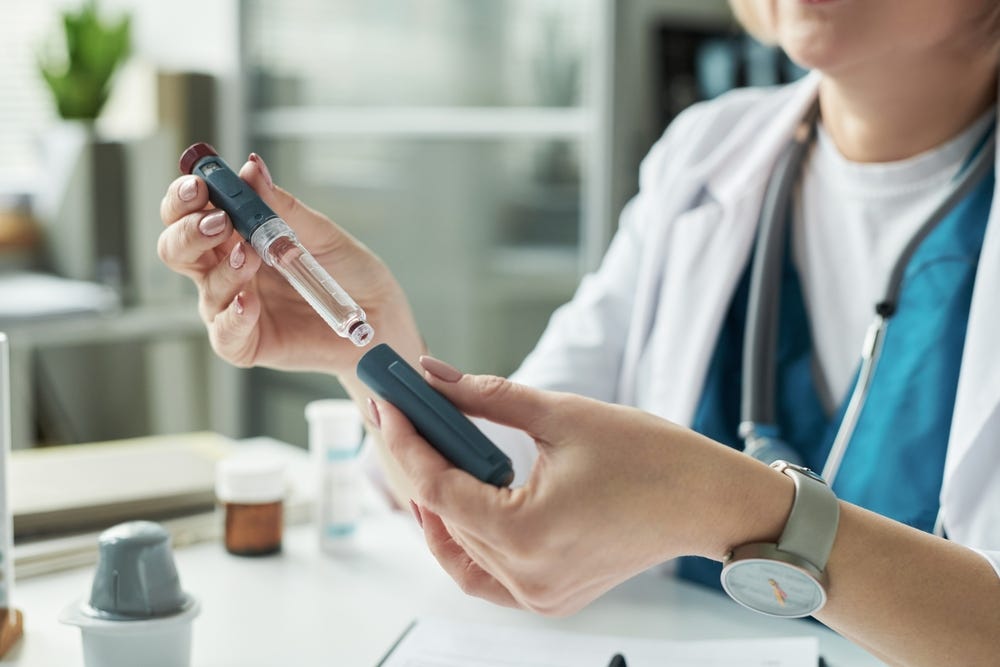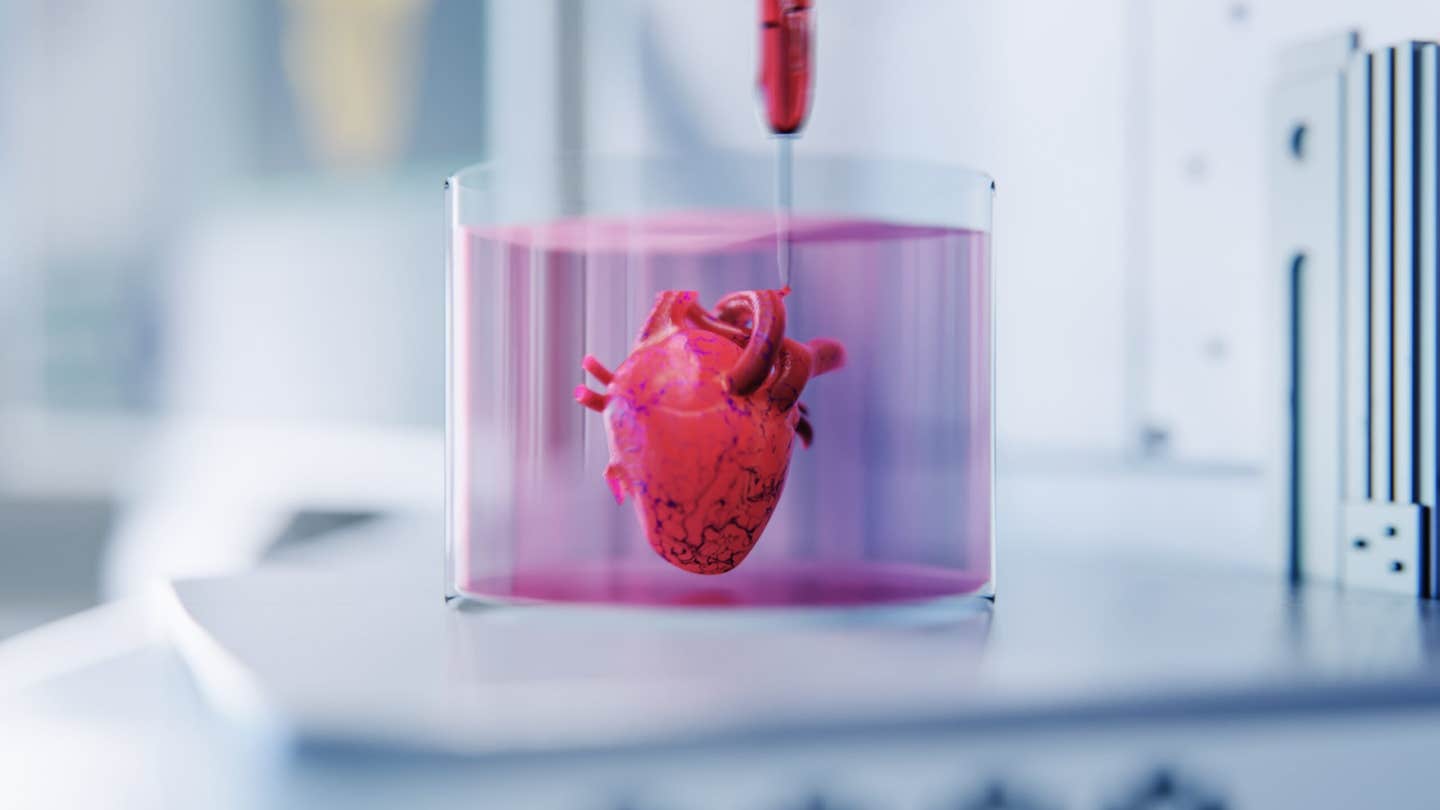New protein discovery paves the way towards life without daily insulin for diabetics
For more than a century, people with type 1 diabetes have depended on insulin therapy to survive. That may soon change.

Scientists at the University of Geneva have found that S100A9 can reduce dangerous ketone levels without insulin, paving the way for a new type of diabetes therapy. (CREDIT: Shutterstock)
For more than a century, people with type 1 diabetes have depended on insulin therapy to survive. Yet even with modern pumps and continuous glucose monitors, insulin is still far from perfect. It’s hard to manage, risky in high doses, and doesn’t always prevent serious complications like diabetic ketoacidosis (DKA).
Now, researchers at the University of Geneva believe they’ve found a way to keep ketones under control without relying on insulin, thanks to a protein called S100A9.
The Role of Ketones
Your body makes ketones when sugar levels are low, usually during fasting. The liver breaks down fat to create these molecules, which serve as an emergency fuel for the brain and muscles. In healthy people, insulin keeps ketone production in check.
But without enough insulin, as in type 1 diabetes, ketones can rise too high. The blood becomes acidic, and DKA sets in. Each year, two to four percent of people with type 1 diabetes end up in the hospital with this condition, and it can be deadly if not treated quickly.
Until now, insulin was the only dependable way to stop ketones from spiraling out of control. That created a frustrating paradox: the very treatment that keeps patients alive can also cause dangerous dips in blood sugar or long-term complications in fat metabolism.
A Protein with Potential
Professor Roberto Coppari and his colleagues have been searching for an alternative path for more than a decade. In 2019, they discovered that S100A9, a protein normally present in the body, lowered blood sugar, ketones, and fat levels in diabetic mice without insulin. Even better, it didn’t cause the usual side effects tied to other therapies.
Related Stories
- New diabetes drug boosts insulin production by 700%
- Brain hormone Leptin may cure type 1 diabetes without insulin
To understand how this worked, the team had to trace the protein’s path through the body. They learned that S100A9 doesn’t act inside the main liver cells known as hepatocytes. Instead, it communicates with non-parenchymal liver cells—immune-like cells that surround the hepatocytes—through a receptor called Toll-like receptor 4 (TLR4). This signal then flips on a molecular switch called mTORC1, which tamps down ketone production.
The discovery was striking. TLR4 is usually tied to inflammation, but here it acted in a completely different way. “TLR4 activation in the liver controls the production of ketones,” explained Gloria Ursino, a postdoctoral researcher and first author of the study. “But this activation process does not trigger inflammation, whereas TLR4 is usually pro-inflammatory. The S100A9-TLR4 dialogue therefore seems to act as a totally unexpected anti-inflammatory drug.”
Testing the Pathway
To make sure this wasn’t a fluke, the researchers ran careful experiments with genetically modified mice. When TLR4 was removed, S100A9 lost its effect. When TLR4 was restored only in the liver, S100A9 worked again. The same was true for mTORC1: when it was blocked, the protein lost its ability to reduce ketones.
The team also created lab-made versions of the protein—both mouse and human—and injected them into insulin-deficient mice.
The results were consistent. Ketones dropped within hours, blood sugar improved, and the animals lived longer. Importantly, the treatment didn’t spark inflammation. In fact, markers of inflammation went down, suggesting the protein might have calming effects as well.
From Lab to Clinic
Human blood samples offered another clue. People admitted to the hospital with severe diabetes showed a small natural rise in S100A9, but it wasn’t enough to prevent DKA. This finding suggested that supplementing the protein could be an effective therapy.
With CHF 2.5 million in support from the Helmsley Charitable Trust, the Geneva team is moving toward clinical trials. Lead researcher Giorgio Ramadori, a senior lecturer at the Faculty of Medicine, sees this as a breakthrough. “The Helmsley Charitable Trust is not only accelerating the progress of our project, but also broadening its scope and impact,” he said.
The plan is to test recombinant S100A9 in people with type 1 diabetes, first alongside insulin at lower doses. If results mirror what’s been seen in mice, the protein could one day reduce or even replace insulin use in some patients.
A Shift in Strategy
What makes this approach different is that it doesn’t try to make the body more sensitive to insulin, like many past drugs have done. Instead, it bypasses insulin altogether. “There have been other drugs that helped insulin work better,” Coppari explained. “But this just meant patients could use smaller doses. The risks didn’t go away.”
By focusing directly on ketone control, S100A9 could change the treatment landscape. Patients would still need insulin to regulate sugar levels, but the constant threat of DKA could be lowered dramatically. That could ease the daily burden of disease management and extend life expectancy.
Beyond diabetes, this pathway may offer clues for other conditions involving metabolism or inflammation. Because S100A9 signals through TLR4 without setting off harmful immune reactions, it could be a safer way to influence energy balance across multiple diseases.
Award-Winning Startup
To push the therapy closer to patients, Coppari and Ramadori have founded Diatheris, a Geneva-based startup. Backed by UNITEC, the university’s technology transfer office, and FONGIT, which supports regional innovations, the company will focus on turning S100A9 into a usable medicine.
Recently, DiaTheris won first place in Switzerland’s “Venture” startup competition. Out of more than 336 participants, the company was judged the most promising in the “Health and Nutrition” category by a panel of leading experts in pharmaceuticals and finance.
The DiaTheris program is focused on commercializing the S100A9 work done in the study and aims to complement insulin therapy, with the goal of easing treatment and improving the quality of life for patients and families. Coppari emphasized that this recognition brings important visibility to their mission of advancing S100A9 into clinical applications, potentially reshaping diabetes care in the near future.
Practical Implications of the Research
The stakes are high. People with type 1 diabetes live 10 to 15 years less than the average person, even with the best care. Current treatments leave too much room for error. A therapy that controls ketones safely and consistently could make a life-changing difference.
If recombinant S100A9 works in humans as it does in mice, it could transform diabetes care. Patients might avoid the constant fear of DKA while needing less insulin overall. That would reduce both the immediate risks of hypoglycemia and the long-term health costs tied to insulin dependence.
The treatment could also offer new options for people with severe insulin deficiency, such as those who’ve had their pancreas removed or live with advanced forms of type 2 diabetes.
On a broader scale, this discovery opens new avenues for tackling diseases linked to metabolism and inflammation, potentially improving therapies well beyond diabetes.
Research findings are available online in the journal Nature Communications.
Note: The article above provided above by The Brighter Side of News.
Like these kind of feel good stories? Get The Brighter Side of News' newsletter.



